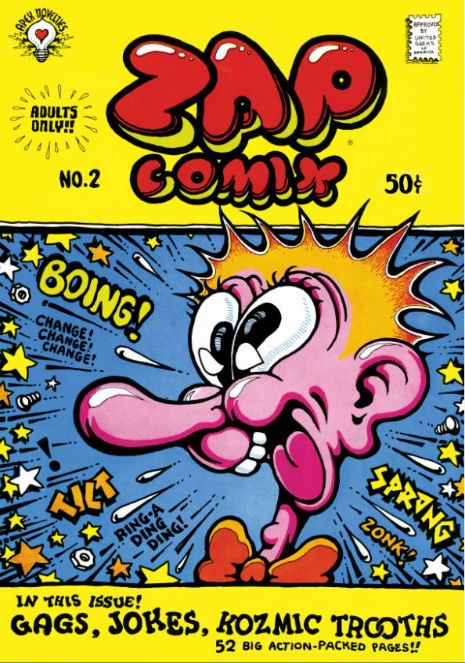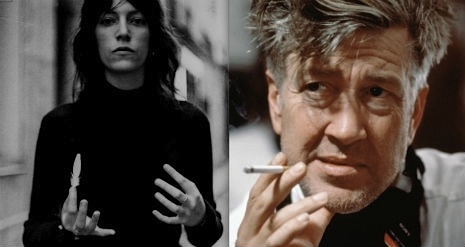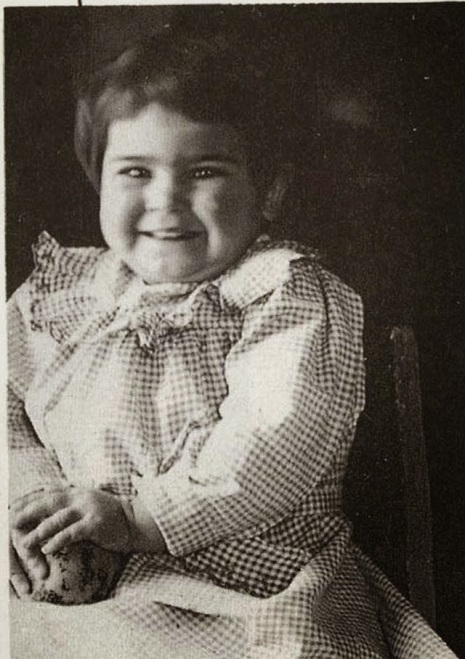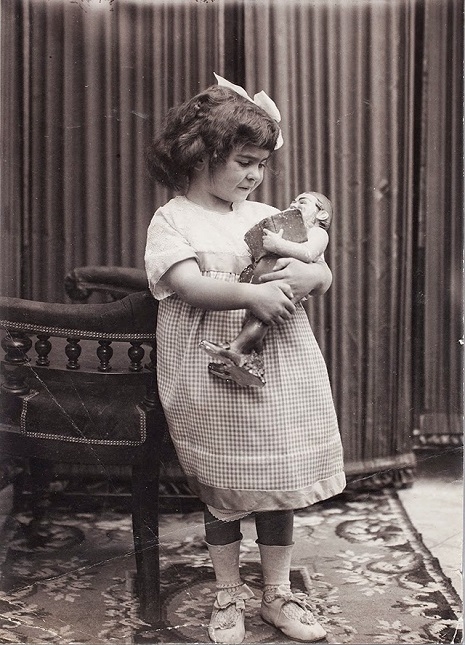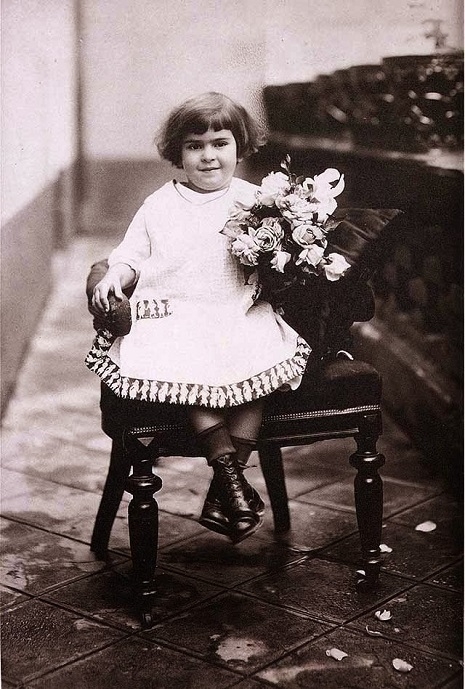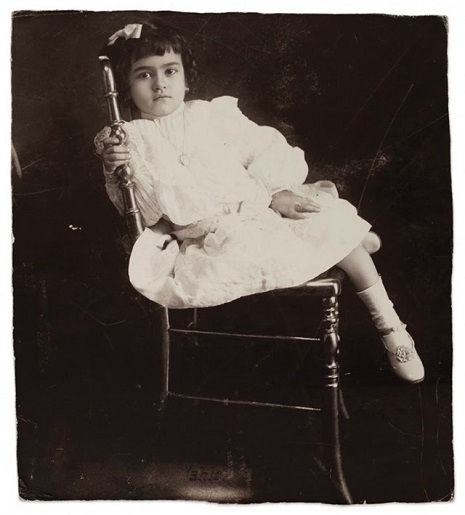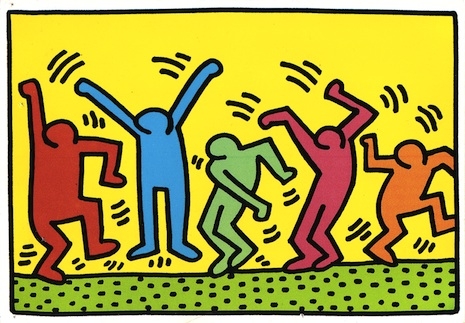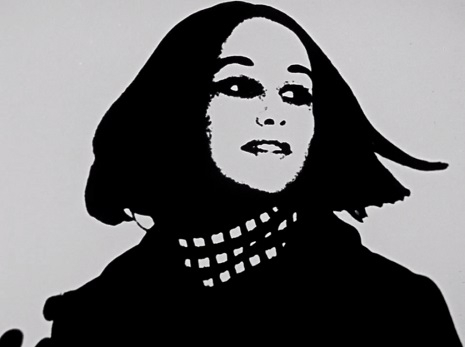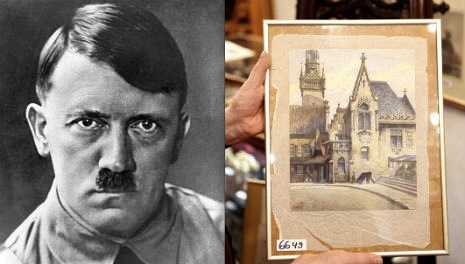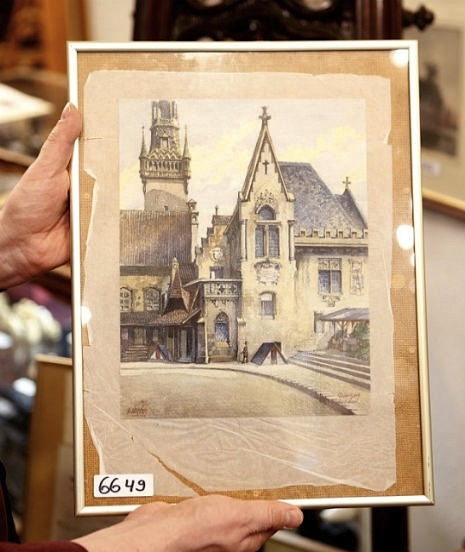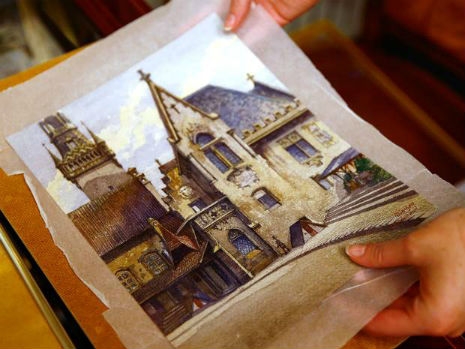Over the Halloween weekend I was visiting my family in Wheeling, WV (it was my parents’ 50th wedding anniversary) and I needed to buy a cheap one-hitter to help get me through it. There’s only one place to buy that sort of thing in my hometown and this would be Wheeling’s sole smut emporium, the very downmarket Market Street News.
Thirty-five years ago, in better economic times for that town, Market Street News was still a dirty book store, but back then it also sold bongs, rolling papers, fake drugs like “Lettuce Opium” or “Coke Snuff,” British rock mags, National Lampoon, biker rags like Easy Rider and Iron Horse, High Times and a small handful of underground comics. A bead curtain separated the front of the shop from the over 21 area and the place smelled heavily of incense, cigarettes and Pine-Sol. It was here, age 11, where I bought my first issue of High Times, the October 1977 issue with Johnny Rotten on the cover and the now infamous “Ted Nugent shits his pants to get out of the draft” interview. What kind of degenerate sold a little kid High Times?
Let me assure you that I was not an innocent child. By that age, I’d already read Ladies and Gentlemen, Lenny Bruce!!, I owned a copy of Naked Lunch and had already tried getting high (unsuccessfully) by eating fresh ground nutmeg and morning glory seeds, something I’d read about in that book’s infamous index section. I wanted to do drugs, I just didn’t know where to get ‘em (aside from “Lettuce Opium,” which yes, I admit that I tried.“Coke Snuff,” too!)
I couldn’t “score” real drugs, but at the age of 11, in a low level smut shop in a podunk West Virginia town, I was able to get my mitts on something equally mind-expanding (and only slightly less illicit): Zap Comix. Lewd, crude, incendiary, mind-blowing in the extreme and incredibly smart, I embraced Zap Comix wholeheartedly, even if I, a sixth grader, was considerably younger than the audience of “adult intellectuals” it was ostensibly intended for.
Although Zap founder Robert Crumb himself was already a very well-known and widely respected artist and counterculture hero by the time I discovered Zap in 1977, I can’t image that it was too much earlier than 1973 or ‘74 that something like Zap Comix would have had the kind of distribution that would have allowed it filter down to small town America. The first (#0) issue of Zap came out in 1968. Not every small town had a head shop at that time, of course, and even when they did, carrying Zap Comix—which presented some completely insane stuff, images WAY more perverse than anything that was being cooked up in Denmark or Sweden at the time—was probably not worth the heat it would bring, especially in that line of work. If they can bust you for selling bongs, why carry filthy and obscene comic books to further tempt fate?
Most people probably found out about Zap generally around the same time I did, no matter what age they were. Unless you were living in a big city or in a college town, it would have been highly unlikely to have encountered it otherwise. This is why I associate Zap with the punk era. At least that’s when a copy first made it into my young hands.
Crumb did the first two issues on his own before ultimately assembling a “Magnificent Seven” of the best underground artists around—San Francisco poster artists Rick Griffin and Victor Moscoso, Marxist biker cartoonist Spain Rodriguez, Gilbert Shelton (the creator of “The Fabulous Furry Freak Brothers”), painter Robert Williams, the demented S. Clay Wilson and later, after Griffin’s death, Paul Mavrides, known for his Church of the Subgenius graphics. The Zapatistas were a sort of “supergroup”—the dharma warriors of comics. Inkslingers. Revolutionaries. The best of the best. Their only yardsticks for comparison were each other and that sort of fraternal competition raised the bar and kept their art constantly evolving and their social satire razor sharp.
Like punk (and Burroughs, Lenny Bruce, Firesign Theatre and John Waters) Zap Comix kind of helped to deprogram me at a young age during my rustbelt Christian upbringing. My deeply religious parents never looked twice at my “funnie books” but if they had they’d have been utterly appalled, finding between the covers of Zap Comix characters like S. Clay Wilson’s gay pirate “Captain Pissgums” who liked to have his crew of perverts, um, piss in his mouth or the “Checkered Demon,” a randy devil cheerfully doing the most obscene things that I’d ever seen depicted on the printed page. It was shocking then and it’s equally shocking today.
Take a look at this short piece from S. Clay Wilson titled “Head First”—IF YOU DARE.
See what I mean? Remind yourself that this strip is now nearly half a century old. The reason I linked to it is because embedding it would probably have made our advertisers very nervous about what kind of people we are! Crumb’s Zap contributions were never as out and out repulsive as Wilson’s, yet he was still utterly fearless in portraying his own infantile sexual fantasies and neuroses (and finding willing groupies to help him act them out along the way. Which he then wrote about in subsequent issues of Zap. Heavy meta…).
The goalposts have moved quite a bit over the decades as “obscenity” has been redefined by culture, AND YET that vile, hilariously fucked up strip has lost virtually none of its power to offend. This is only one of the reasons to love S. Clay Wilson—whose work ultimately sets the tone of Zap because his is the wildest, most feral and least compromising—his willingness to basically puke on his reader’s sensibilities, no matter how “far out” they think they are. The sole purpose is to be brutally offensive, no more no less. You can look for something deeper, go ahead, but I’m not sure you’re going to find it in a piece like “Come Fix” (click for pdf) in which a lesbian biker chick injects semen intravenously with an interesting result.
The front and back cover of Zap #14 by S. Clay Wilson
In the context of the late 1960s that was something both sickening and ENLIGHTENING. And it had nothing whatsoever to do with flower power or hippie. Zap Comix was cynical and dark, twisted and perverted, full of “gags, jokes, kozmic trooths.” Zap wasn’t interested in persuading you of anything, it wanted to beat its epiphanies into you.
This is another reason I see Zap Comix as being aligned with punk, because philosophically-speaking it was. Indeed in its crudeness, lewdness and desire to shake its readers out of their complacency, Zap anticipates punk (and a lot of other things!) and surely would have influenced many of punk’s prime movers who undoubtedly were exposed to it.
Anyway, when I bought my one-hitter, I got into a conversation with the guy behind the counter and I mentioned that I used to buy Zap Comix there when I was a kid. Then the very next morning in the hotel I read an article in the New York Times about how Fantagraphics were publishing the complete run of Zap, along with a sixteenth and final issue, in a deluxe slipcase box set weighing over 20 lbs, complete with sixteen high quality giclée prints of each Zap Comix cover.
The front and back cover of Zap #13 by Victor Moscoso
I immediately wrote to Fantagraphics fab director of publicity Jacq Cohen and requested a review copy of The Complete Zap Comix. It was sent Fedex two-day shipping, which seemed to me to be the longest two days of my entire fucking life. An eternity. In fact, it ended up being a day late, and by that time, I was truly salivating over the prospect of its arrival. I was not disappointed. I’m a man with a lot of toys and The Complete Zap Comix went immediately into my “prized possessions” category. If you’re reading this thinking “Yep, I need that” trust me, you do need it. However, as far as pricey Christmas presents to yourself go, you might not want to wait for Santa to lay this one under your tree because it’s probably going to sell out. Only 2500 have been printed and from what I can tell anecdotally from how many friends of mine are buying it, it won’t last long.
The irony of turning something that was once sold in dirty bookstores into a $500 collectible is delicious, but I can’t think of a more deserving title than Zap. The production quality of The Complete Zap Comix is first rate and the pages are clearer than they’ve ever been, blown up to 9.75” x 13.25” and painstakingly cleaned up digitally. Everything comes in a sturdy, gold-embossed slipcase and there’s a separate book dedicated to “The Zap Story,” an oral history/scrapbook that also reprints some Zap rarities and “jams” where each of the artists would complete a frame or two—upping the ante in the process—and then pass it on to the next guy.
In the title here, I declare that The Complete Zap Comix box set “is the greatest thing in the history of the world, ever” and I’m only semi-exaggerating. Seeing the whole of the Zap run laid out like this, it seems obvious—so very, very obvious—what a profound and truly American cultural treasure this is. This is great art of historical and cultural importance that changed people, blew their minds and inspired them. I know that it changed ME. Zap Comix deserves to be reappraised and valued for what it’s truly worth and Fantagraphics has done an amazing job with this stunning box set.
Now the Smithsonian Institute needs to step up to the plate while the remaining Zap artists are still alive and kicking against the pricks and give them their due. It could happen. It should happen. Let’s hope it does happen.
Below, one of the greatest—and most eerily prophetic—comics EVER by Gilbert Shelton, “Wonder Wart-Hog’s Believe It or LEAVE It!”...Um… he could be talking about TODAY’s America, here, couldn’t he???
More classics from Zap Comix after the jump…








